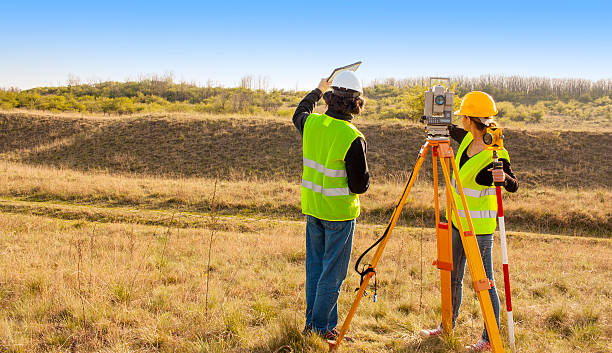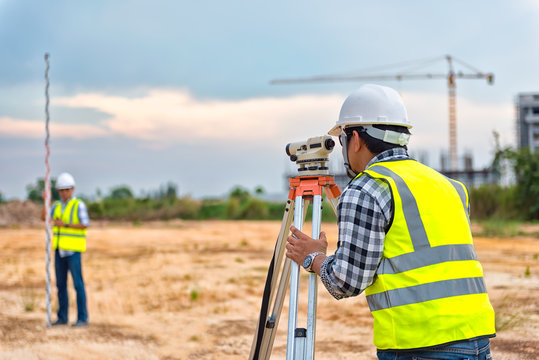How Can Topographic Surveys Enhance Your Construction Planning?
In construction projects, precise planning and accurate data are crucial for ensuring that every aspect of the project is executed seamlessly. One of the most important steps in this process is conducting topographic surveys. A topographic survey company in UAE can provide detailed, accurate information about the land, its features, elevations, and boundaries, which can help shape the entire construction plan. Whether you're building a house, a commercial property, or large infrastructure, understanding the land is the first step to success.

What Is a Topographic Survey?
A topographic survey is a detailed study of the land, capturing natural and man-made features, as well as changes in elevation. It’s different from a boundary survey, which primarily focuses on determining property lines. A topographic survey goes further to map features like trees, roads, streams, and buildings, as well as contours of the terrain, such as hills, slopes, and valleys. The data from these surveys is typically represented in the form of contour lines on maps, indicating variations in elevation.
Topographic surveys are typically used for a variety of purposes, including land development, planning, construction, and infrastructure projects. In construction, these surveys are invaluable in determining how to proceed with building on a given site.
How Do Topographic Surveys Benefit Construction Planning?
1. Provides Accurate Site Information
The primary benefit of topographic surveys is the accurate data they provide about a site’s physical characteristics. For any construction project, having precise information about the terrain is essential. By identifying the elevation changes, slopes, and features such as rocks, water bodies, and trees, the survey helps engineers, architects, and contractors understand the landscape better. It also enables project managers to assess whether certain areas need to be leveled, filled, or excavated before construction can begin.
2. Facilitates Effective Design
In order to design a building or any structure that suits the land, architects need a clear understanding of the terrain. Topographic surveys provide them with the data they need to design structures that will fit the land’s natural layout. For example, knowing the elevation and slope of the land will help architects determine where the foundation of a building should be placed, and how the building should be oriented to optimize light and views.
The design process becomes more efficient when designers have accurate topographic data. With this information, architects can avoid design errors, minimize unforeseen complications, and better estimate costs. Additionally, the topographic survey can inform decisions regarding drainage systems, water management, and utilities, which are integral components of any building project.
3. Identifies Potential Challenges Early
A significant advantage of topographic surveys is their ability to identify potential challenges and obstacles early in the construction process. If there are hidden problems such as poor soil quality, high water tables, or steep slopes, a topographic survey can reveal these factors before construction begins. This early insight allows contractors to adjust the construction plan, reducing costly delays and changes down the line.
For instance, if the land has uneven terrain or hazardous conditions, construction workers can take precautions to ensure that safety standards are met and that the structure will be stable. Early detection of these challenges helps avoid costly mistakes, potentially saving money and time in the long run.
4. Aids in Regulatory Compliance
Before starting any construction project, it’s necessary to comply with local zoning laws, building codes, and environmental regulations. These regulations often depend on the site’s topography. A topographic survey helps ensure that your project is designed in line with these requirements, helping you avoid fines or delays in obtaining permits. For example, certain areas may have height restrictions or require specific water drainage plans based on the slope of the land. The survey ensures your design adheres to these rules.

Moreover, a topographic survey is often required when applying for building permits. It provides authorities with detailed information about the site, which helps them assess whether the planned construction will negatively impact the environment or violate zoning laws.
5. Improves Construction Efficiency
Topographic surveys contribute to better planning and scheduling of a construction project. With accurate data on hand, project managers can make more informed decisions on how to allocate resources, materials, and time. For example, knowing where to dig, fill, or level the ground, or where to install utilities, can significantly reduce time spent on these tasks. It also reduces the chance of workers making errors, leading to fewer reworks and delays.
In addition, knowing the exact dimensions of a site and its features ensures that materials are purchased in the correct quantities. This improves material management and avoids waste, which ultimately reduces costs. If you’re looking for a topographic survey company near me, these experts can provide the precise data required for smoother, more efficient construction planning.
6. Helps with Land Preparation and Site Layout
Topographic surveys can help determine how much earth-moving work is needed. For example, it can show if the ground is uneven or if areas need to be leveled before construction begins. By knowing the elevations and contours of the land, construction professionals can create a more efficient site layout, which can improve the overall construction process.
Moreover, these surveys help in laying out building foundations, roads, parking lots, and utilities such as water, electricity, and sewer systems. Knowing exactly where these elements should be placed will prevent costly mistakes and minimize the time spent on redesigns.
7. Supports Future Expansion or Modifications
When planning construction on a site, it’s essential to think ahead to future expansion or modification. Topographic surveys provide a solid foundation for this by offering long-term insight into how the land will respond to additional structures or changes over time. If future expansions or renovations are planned, the original topographic survey can help determine how to incorporate new elements without disturbing the natural landscape or causing structural issues.
8. Provides Accurate Mapping for Utility Installations
Topographic surveys help ensure that utilities like water, electricity, gas, and sewage systems are installed efficiently. With accurate data on the terrain and natural features, construction planners can choose the most effective routes for underground utilities. This helps avoid unexpected complications, such as disruptions in local infrastructure or dealing with underground obstacles like rock formations, pipes, or water channels. For reliable and precise utility planning, you can rely on a topographic survey company in UAE to provide the essential data needed for smooth and efficient installation processes.
Sustainability is an increasingly important aspect of modern construction, and topographic surveys can play a significant role in ensuring that a project is as sustainable as possible. By identifying natural features such as water bodies, forests, and wildlife habitats, a topographic survey can guide decisions to minimize environmental impact. For example, it might suggest building in areas with less disruption to local ecosystems or help in planning drainage systems to prevent erosion.
The survey also aids in the efficient use of resources by ensuring that construction projects do not unnecessarily disturb the natural environment. By integrating sustainable design principles with accurate land data, topographic surveys contribute to greener and more eco-friendly construction practices.

Conclusion
Topographic surveys are an essential tool in construction planning, providing vital data that shapes every stage of the project. From the initial design phase to long-term maintenance, topographic surveys enable more accurate, cost-effective, and environmentally-conscious decisions. Whether you’re dealing with land development, infrastructure projects, or small residential construction, these surveys enhance efficiency, help mitigate risks, and support better resource management.
If you're looking for expert topographic survey services, visit arabianse.com for more information and to get started on your next project today.
Contact
For more information or to schedule a consultation, feel free to contact us at +971-56-1466788. Our team is ready to assist you with all your land surveying and geographical mapping needs.












